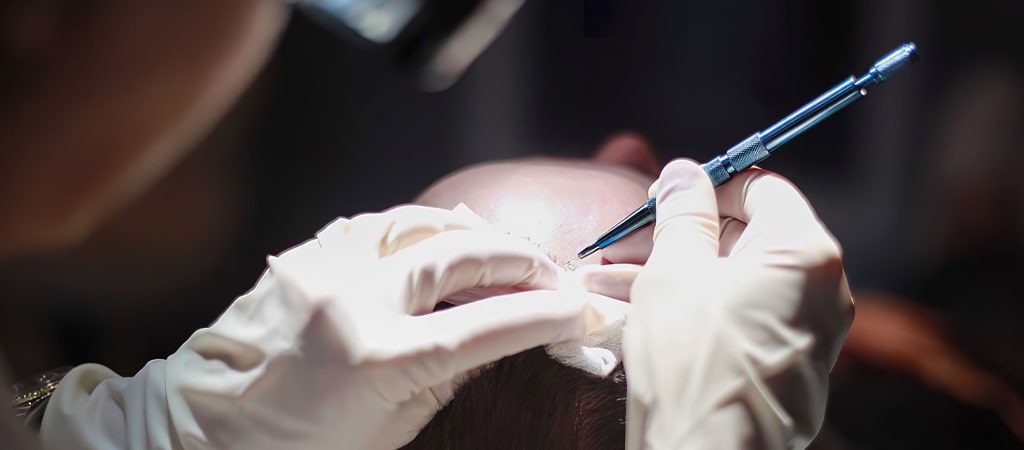What is a Gastric Balloon?

A Gastric Balloon is a non-surgical procedure that aims to control obesity by being placed in the stomach through the esophagus and giving the patient a full feeling. The balloon, made of silicone or polyurethane material, is placed in the stomach and inflated to a volume of 400-700cc using air or liquid. Patients who are not borderline obese, and struggle to lose weight with a healthy diet and exercise can opt for this method.
The gastric balloon stays in the stomach for 6 months to a year depending on the patient’s condition, and is then removed. This method is only applied to patients who meet certain conditions. Patients are advised to reduce portion sizes and consistent eating. With this treatment, an individual can lose 10-20 kilograms in 4-6 months. This rate may vary depending on the patient’s eating habits and quality of life.

Types Of Gastric Balloon
Gastric balloons are divided into two: fixed volume balloons and adjustable gastric balloons. Fixed volume balloons remain in the stomach for 6 months and are removed at the end of this period via an endoscopy.
Fixed-volume balloons can be taken orally, and deflate on their own at the end of 4-6 months and are excreted through feces. The adjustable gastric balloon allows the volume of the balloon to be adjusted while in the stomach. These balloons are inflated between 400 – 700 cc after being placed in the stomach. Depending on the patient’s condition, the amount of fluid in the balloon can be increased or decreased.
The recommended treatment may vary according to special conditions and the medical history of a patient.
Who Is Suitable For A Gastric Balloon Operation?
A Gastric balloon procedure can only be applied to patients who meet certain conditions such as:
- Between the ages of 18-65
- Patients with a body mass index of 27 and above who are not suitable for surgery
- Patients with a body mass index above 35 who have to lose weight before obesity surgery due to serious risks
- Patients who have previously tried various other weight loss methods and failed
- Patients who are not dependent on alcohol or any medication
- Patients who are not pregnant and are not likely to become pregnant in the next 12 months
- Patients who do not have problems such as gastric hernia, esophageal varices, ulcers and stenosis in the digestive system
- Patients without a history of chronic high-dose painkiller or aspirin use
- Patients who have never had open abdominal surgery before
- Patients without a history of bariatric surgery, intestinal blockage or peritonitis
Patients who meet the above conditions can receive obesity treatment with this method. Before starting the treatment, necessary tests and examinations are performed to determine the patient’s suitability for treatment.
How Is A Gastric Balloon Operation Performed?
Before the procedure, light sedation is applied to the patient. The balloon is then inserted into the stomach via an endoscopy procedure. After the balloon is successfully placed in the stomach, it is inflated using liquid or air. The liquid filled balloon is made of saline and a dye called methylene blue. The aim is to ensure that the patient notices the color during defecation in case of leakage. The application time is approximately 15-20 minutes. After the procedure, the patient is kept under observation for 1-2 hours as a precaution.
The duration of the balloon in the stomach varies according to the brand also. While the lifetime of some balloons is 6 months, this period can be up to 1 year for some. After the expiration of the effective period, the balloons are deflated and removed from the stomach by following the same steps.
What To Pay Attention To After The Procedure
After the gastric balloon is placed in the stomach, it’s important the patient pays attention to their eating habits.
Nutrition after gastric balloon should be as follows:
- Foods should be eaten in small pieces and slowly.
- The amount of meals recommended by the specialist should be followed.
- No less than 2 liters of water a day should be consumed.
- Frequent snacking should be avoided.
- Carbonated and caffeinated drinks should be avoided.
- Liquids should not be consumed during meals.
- Do not smoke on an empty stomach
- Eating and drinking should be stopped at least 2 hours before going to sleep.
- An exercise program should be followed.
- If a constant pain is felt in the stomach, a change in urine color is noticed, a specialist should be consulted.
It is important to follow these recommendations for a healthy treatment process after the procedure.
Advantages Of A Gastric Balloon
A Gastric balloon procedure is not a surgical operation. It is a preferred choice because the patient is discharged on the same day and it is a low-risk operation. Another advantage is that the procedure can be repeated if no results are obtained.
Gastric Balloon FAQ’s
Does a gastric balloon operation provide definitive results?
Does a gastric balloon operation provide definitive results?
If patients follow the necessary recommendations, a Gastric Balloon procedure can return definitive results.
In this operation, the balloon that takes up space in the stomach reduces calorie intake and helps to lose weight. When the treatment method is supported by exercise, the result is much more positive.
How long does a gastric balloon operation last?
How long does a gastric balloon operation last?
The gastric balloon operation takes approximately 15-20 minutes. This time may increase or decrease depending on the patient's condition. After the operation, the patient is discharged on the same day.
How long does the gastric balloon stay in the stomach?
How long does the gastric balloon stay in the stomach?
Although it varies, the gastric balloon usually stays in the stomach for 6 months to 1 year. At the end of this period, the balloon is deflated via an endoscopy and removed from the stomach.
Can the gastric balloon deflate or burst?
Can the gastric balloon deflate or burst?
The gastric balloon does not burst, however in rare cases it can melt or deflate due to high stomach acid. This situation is very rare, therefore there is nothing to be afraid of. The liquid in the melting gastric balloon is naturally excreted.
Are there any risks involved in a gastric balloon operation?
Are there any risks involved in a gastric balloon operation?
The gastric balloon operation, like any other medical operations, does have minor risks. In rare cases, pain and nausea may be felt for a few days after the operation. This nausea and pain can be relieved with medication.
The main risk however is the balloon deflating or melting. Although the balloons produced today are quite durable, events such as deflation and melting can still occur. Since intestinal blockage may occur in case of deflation, a specialist should be consulted immediately.
Who is a gastric balloon operation not suitable for?
Who is a gastric balloon operation not suitable for?
This application is not suitable for individuals who are over the obesity limit. It is also not recommended for people undergoing cancer treatment, patients using cortisone and pregnant women.
How is the gastric balloon removed?
How is the gastric balloon removed?
The balloons are excreted in the feces from the body and dissolved. Another method is to empty the air or liquid inside the gastric balloon and remove it via an endoscopy.





